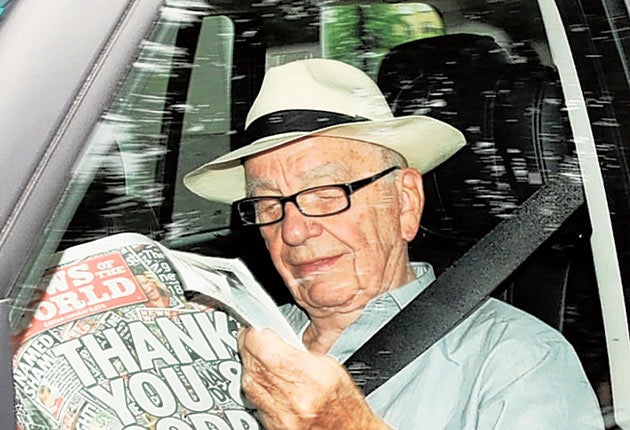When Murdoch broke the print unions

There are former print workers in London's East End who still will not speak to one another because they were on different sides of the wall around Rupert Murdoch's Wapping compound 25 years ago. To old union stalwarts, Fortress Wapping had a reputation as grim as the nearby Tower of London.
The 1986 dispute was one the greatest defeats the British trade union movement ever suffered, comparable to the miners' strike that preceded it.
No employer has inflicted more damage on the private unions than Rupert Murdoch.
Before Wapping, newspapers were put together by a cumbersome process of placing metal on wooden racks to produce a mirror image of a page ready for the printer. Deadline pressure demanded it be done quickly. This meant that the highly skilled men who put together the pages – and they were all men – had only to down tools for an hour or two for an edition to be lost, at vast cost to the proprietor.
They were also highly organised. They ran a closed shop – now illegal – under which no one could work as a printer without a union card.
But 30 years ago, the future of the Fleet Street printers came under threat from new technology.
Lord Thomson, owner of The Times and Sunday Times, tried to introduce new technology in the late 1970s, whereupon the members of the National Graphical Association began a strike which took The Times out of circulation for more than a year. After the NGA members returned to work, victorious, Lord Thomson lost heart and sold his titles to Rupert Murdoch, who devised a plan to destroy the power of the print unions. He bought up a site in Wapping, had its fine Georgian buildings ripped down and replaced by an ugly compound of offices which still stands there.
The print unions were told that he needed it for a new venture, an evening newspaper to rival the Evening Standard, while in great secrecy, IT experts were brought in from the USA to install computers.
Murdoch also engaged a private delivery firm, TNT, to distribute his newspapers by lorry, to avoid the risk that the rail unions would refuse to handle them, and struck a deal with Eric Hammond, maverick leader of the electricians' union, who was prepared to break the tradition of TUC solidarity and help recruit maintenance staff.
When all was ready, the print unions were suddenly presented with the news that all four of the Murdoch titles were moving to Wapping, where there would be direct input of copy by journalists and a drastic reduction in the head count. The NGA and the other big print union, Sogat, which represented the less skilled and less well-paid staff, reacted by calling their 5,000 members out on strike, unaware that this was exactly what Murdoch expected. He sacked them all.
For months, the new compound, surrounded by high walls topped with razor wire, was picketed day and night, sometimes by thousands of print workers and sympathisers. Some experienced journalists refused to work there. Others left at the first opportunity, yet the TNT lorries emerged every day with newspapers. The print unions made the painful discovery that, this time, they had been lured into a dispute that was costing them more than it was costing the firm. After more a year, they gave in.
The power of the print unions was permanently broken, not just in Wapping but across the whole industry. Not only that, but every other private sector union took note of what could happen if they came up against a wealthy, determined proprietor backed by a sympathetic government.
There has not been an industrial dispute on the Wapping scale since.
Yesterday the announcement of the site's closure caused fear for workers. A statement said: "The decision to sell the 15-acre site follows a review of News International's London property portfolio. The majority of... editorial and commercial staff have now relocated into Thomas More Square, with the remainder relocating by the end of 2011."
The 15-acre site, for which Murdoch paid about £300,000 an acre in 1985, is now expected to be worth hundreds of millions of pounds.
Join our commenting forum
Join thought-provoking conversations, follow other Independent readers and see their replies
Comments
Bookmark popover
Removed from bookmarks